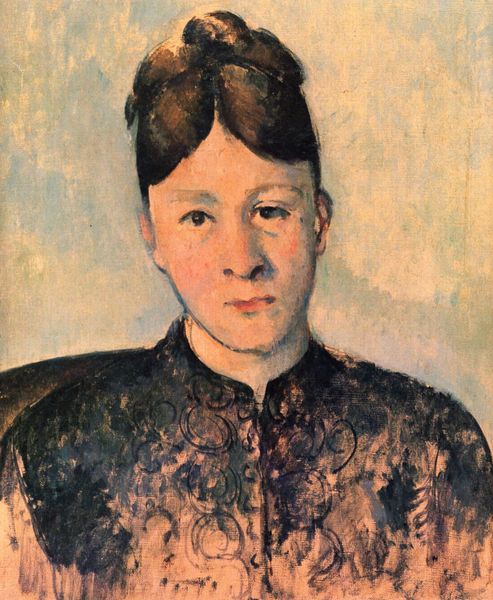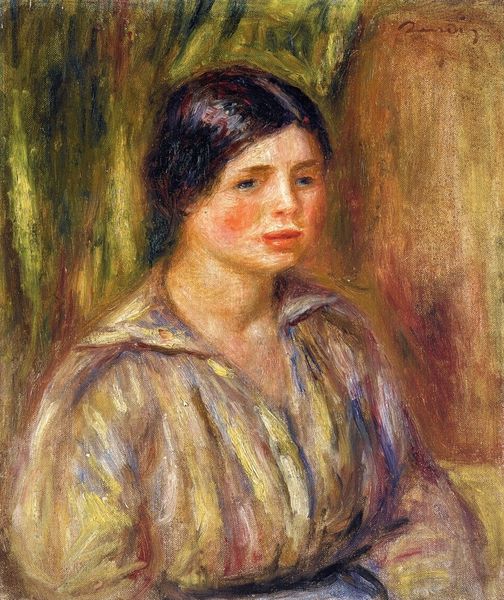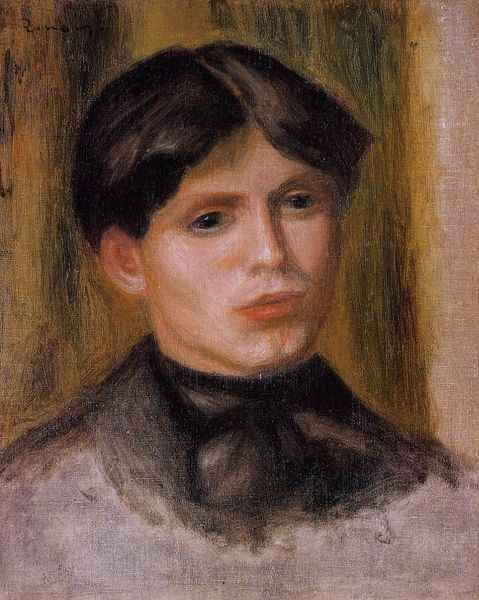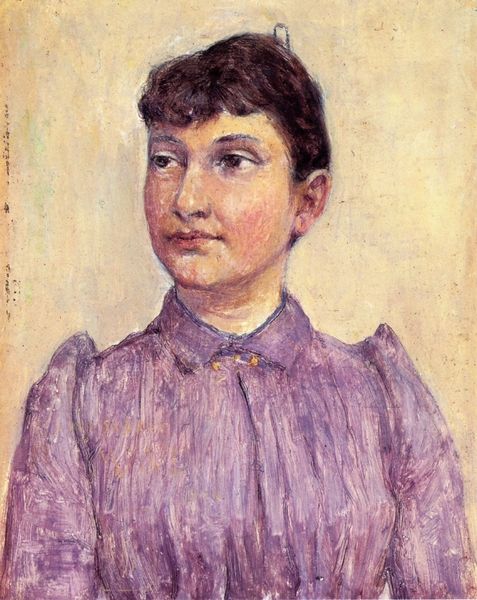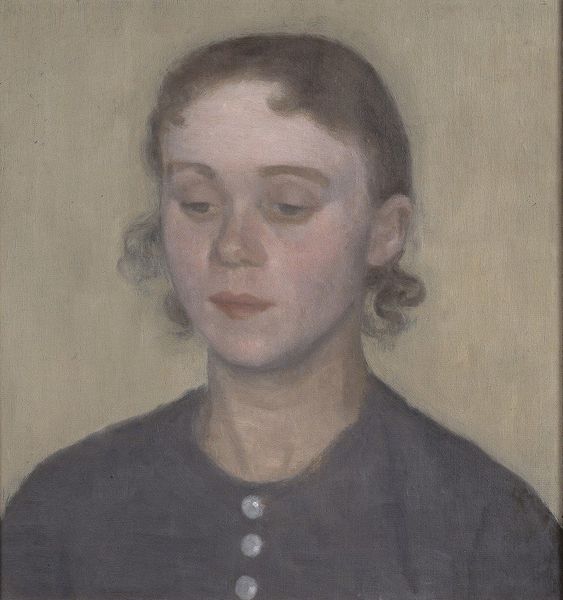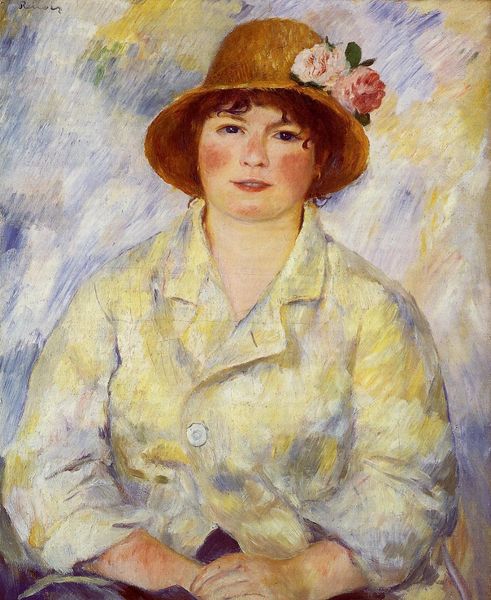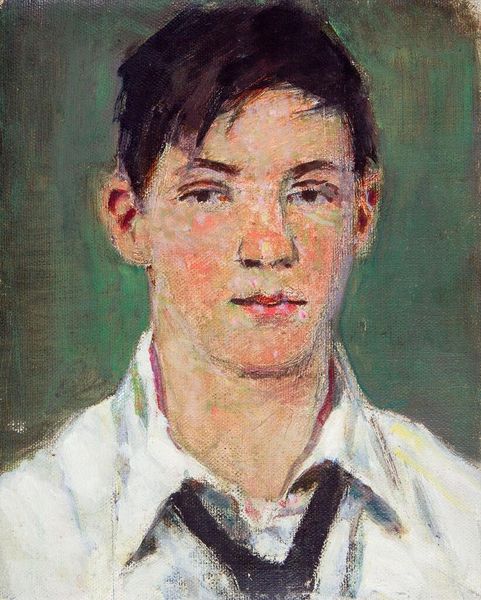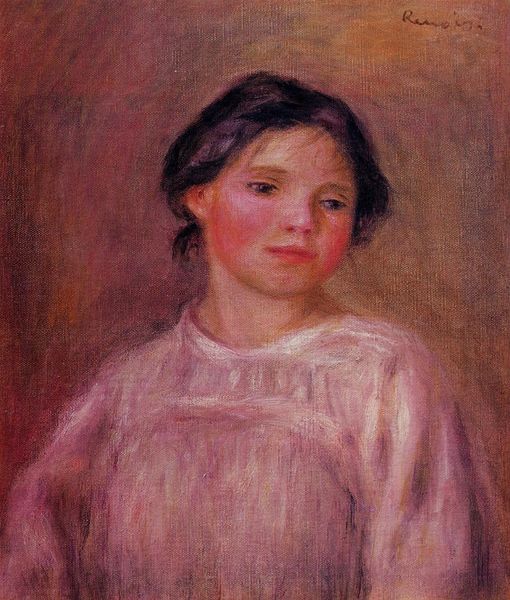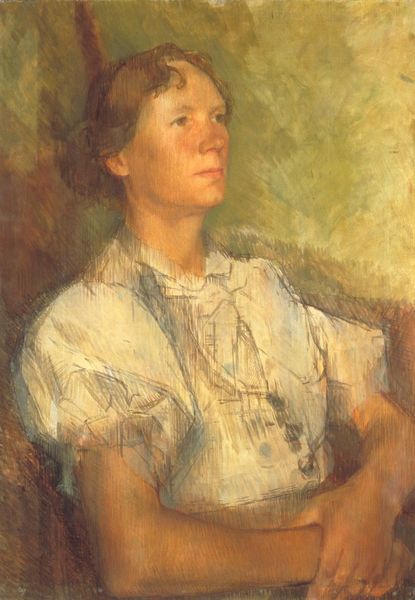
painting, oil-paint
#
portrait
#
painting
#
oil-paint
#
oil painting
#
post-impressionism
#
academic-art
#
portrait art
#
modernism
Dimensions: 47 x 39 cm
Copyright: Public domain
Curator: Paul Cézanne's "Portrait of Madame Cézanne," painted around 1890, hangs before us, rendered in oil. I find it incredibly intriguing how the texture itself conveys so much. Editor: The first thing that strikes me is the subdued palette – it feels strangely quiet, like a memory fading at the edges. It gives me an overall feeling of melancholy. Curator: Indeed. The materials themselves invite consideration. Cézanne’s methodical application of paint—layer upon layer—demonstrates a slow, deliberate process, challenging any facile distinction between mere craft and fine art. Think about the cost of the materials, the time it took; all these are acts of production. Editor: Yes, you are so right, it's as if he is building the portrait, one meticulous block at a time, and there's a strange vulnerability in her gaze that captures me. Her pale complexion contrasted with those flushed cheeks hint at a hidden narrative. Do you find that this invites one to question our accepted, often masculine, portrayal of this creative genius? Curator: Absolutely. It pulls at those conventional portrayals through the very materiality of paint. There’s a raw honesty here. We see not only the subject but the labor involved, challenging idealized portraits and social class dynamics through honest, visible artistry. The act of applying and layering of the paint becomes crucial. Editor: Precisely! And, isn’t there also an intimacy created through this patient construction, the many sittings and revisions? This almost obsessive building up of layers seems like a metaphor for the complexities of their relationship. It makes me want to think of this intimate setting and these small details to understand the artwork. Curator: I agree wholeheartedly. And the visible brushstrokes? They blur the lines between the personal expression and pure material fact, pointing to art making as a social act that uses labor, time, materials and skills that deserve respect. Editor: So, in viewing this, I am reminded about how materials and time and intention—how these contribute to a depth far beyond simple representation. Her very presence whispers something personal about the way a story is made, constructed stroke by painstaking stroke, by life and love and art and marriage.
Comments
No comments
Be the first to comment and join the conversation on the ultimate creative platform.
